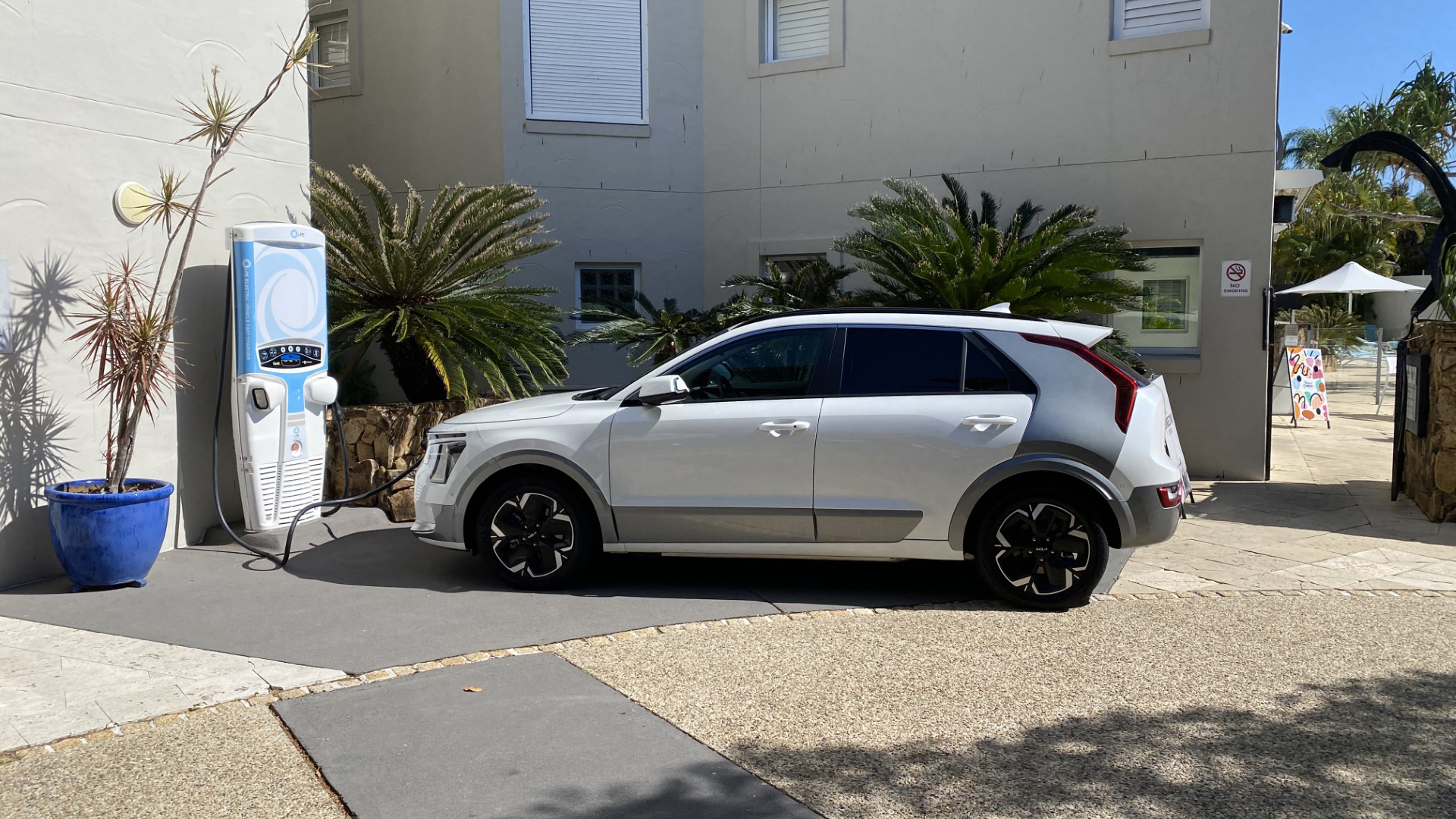The Kia Niro EV is the sensible little brother to the showy, extrovert, headline-stealing EV6.
It’s a more sober and rational small family SUV boasting decent cabin space, long electric range, fast charging, premium features and smart tech.
But as ever more EVs enter the Australian market, the Niro EV’s price tag is a sticking point.
Kia asks $66,590 plus on-roads for the entry-level Niro S EV (about $70,600 drive-away), while our test Niro GT-Line EV is $72,360 plus charges, or some $76,500 drive away. That’s chunky.
You’re in traffic in the larger, more striking Kia EV6 Air for about the same money as a Niro GT-Line.
Then there are EV rivals such as the Hyundai Ioniq 5 (from $72,000), Tesla Model Y (from $69,300), Polestar 2 (from $67,400) and Volvo XC40 Pure Electric (from $73,990) to consider. A quality-packed selection.
Cheaper alternatives also abound, including the Hyundai Kona Electric (from $54,500), MG ZS EV (from $44,990), MG4 (from $38,990), Cupra Born Electric (from $59,990), and BYD Atto 3 (from $48,011).
We see if the Niro GT-Line’s up for the fight with a seven-day family test.
Day 1 – Meet and greet
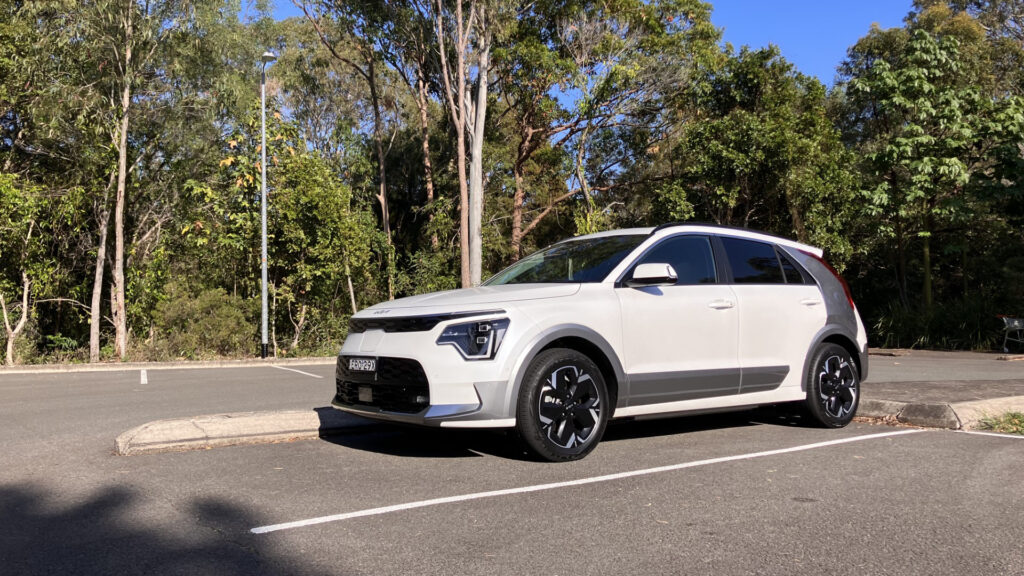
To behold, it’s a big improvement over the old Niro.
Remember it? Kia introduced the ageing first-gen Niro here in 2021 to get the market and its dealers primed for an EV onslaught.
It was on sale for about five minutes before this fresher, sharper second generation arrived.
“Look, I’m an electric car!” styling vibes are strong, despite there being combustion engine Niro versions.
An almost Robocop face mixes with funky black rims and a two-tone flavour, our example’s white body adorned with giant silver streaks over its arches, sides and up the rear pillar.
Personally, I’d dip into the wallet and find an extra $520 to option Kia’s blue, red or lovely green colour. Each makes the body more striking, and banishes our white Niro’s rental car feel.
Must say I like the rear end design with its boomerang-shaped LED taillights – it looks like a retro-inspired Ford Focus with its wide rear hatch and high-mounted lights.
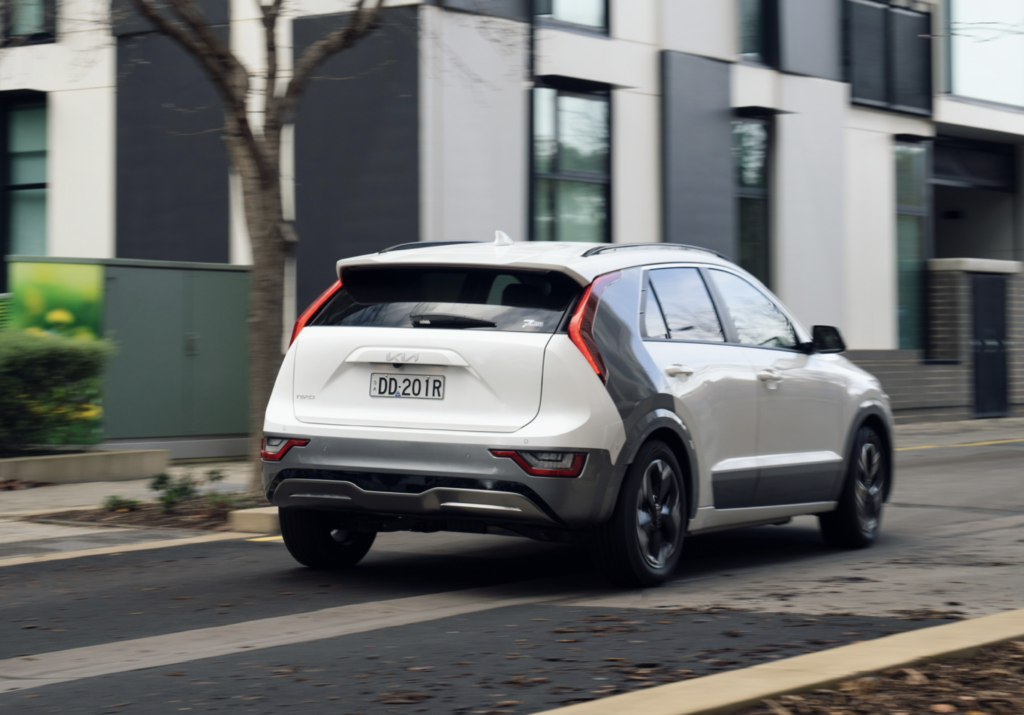
Like the Hyundai Ioniq 5, the Niro’s classified an SUV, despite my old eyes just reckoning both are large hatchbacks.
The Niro’s ground clearance is just 160mm – only 8mm above something like a Mazda2 city car – and front-wheel-drive only. It’s a car, isn’t it? Not an SUV.
Anyway, I don’t mind the look of it, but its size and the fact it has a Kia badge and not something more premium has me scratching my head at the $76,500 drive-away price.
It’s a lot, right? But at least it falls under EV rebate thresholds.
With a full battery and 435km range showing (with air conditioning on), the test begins.
Day 2 – Appreciating the basics
Price aside, the Niro EV’s on-paper skills are strong.
Its 460km range from a 64.8kWh battery is anxiety-bashing, while poking through the car it feels massive for a small SUV.
Boot’s 475L – more than a Mazda CX-5’s – while rear seat space is cavernous for a car this size – important for us with always-growing kids.

Disappointingly, the frunk is only a 20L job, but it’s handy for storing a charging cable.
I’ll pub argue with anyone that Kia’s cabin presentation, technology and usability is best of all the ‘everyman’ brands.
The Niro’s is no different – our GT-Line scores a 10.25-inch infotainment screen integrating into a 10.25-inch driver display instrument cluster behind a single panel. This, and the quality-feeling fake leather trim, give a serious air of prestige.

Prodding around, most plastics are soft touch, the centre console buttons and gear selector dial are well laid out and there’s a classy strip panel with digital buttons (plus proper rotary knobs) to control climate. Kia nails this stuff brilliantly.
The drive so far matches the interior serenity. But do I want this? Piloting the Niro is a relaxing joy, but pretty darn boring.
A single motor turning just the front wheels offers 150kW and 255Nm – that torque figure way down on the previous Niro’s 400Nm.
Why? Kia says to improve drivability and reduce the chance of wheelspin and torque steer. This it does, and I agree the motor’s calibrated for sensible, user-friendly driving.
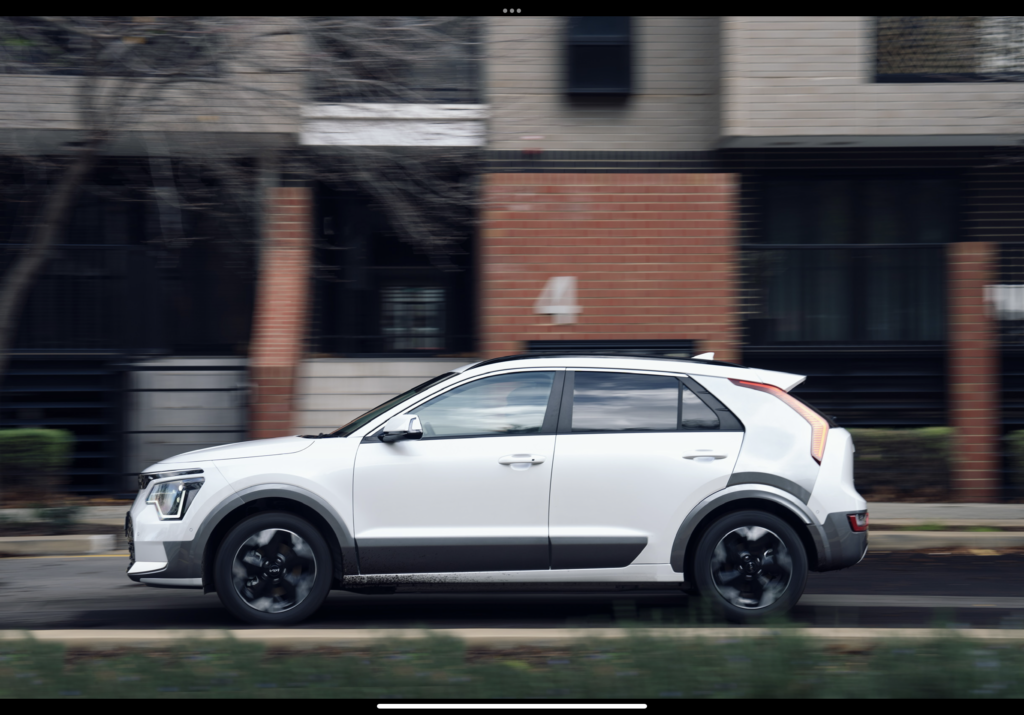
I just suppose at this price I was expecting more head-pinning performance – a cheaper RWD Tesla Model 3 would thump the Niro’s leisurely 7.8-second 0-100km/h time.
The more I consider it, I accept many in the market don’t want or need any more acceleration. The Niro’s nippy enough from standstill, and, so far, a positive trade-off is economy.
My energy use over the first 250km is an even 15kWh per 100km – a good chunk down on Kia’s official figure.
Day 3 – Family road trip
The eight- and 11-year-old clamber in the back for the weekend’s activities. Small SUVs are usually a challenge space-wise for them – they like to bring numerous large books, an iPad, giant drink bottles and snacks for any journey. It gets busy back there.
The Niro GT-Line copes well with their tsunami, and they’re pleased with rear air vents (not all small SUVs have these) plus USB-C ports perfectly placed in the sides of the front seats.
Minds are officially blown when I point out a household socket under the rear seats. This Vehicle-to-Load (V2L) socket is only on the GT-Line grade Niro – it seems silly to not have it on the entry-level too.
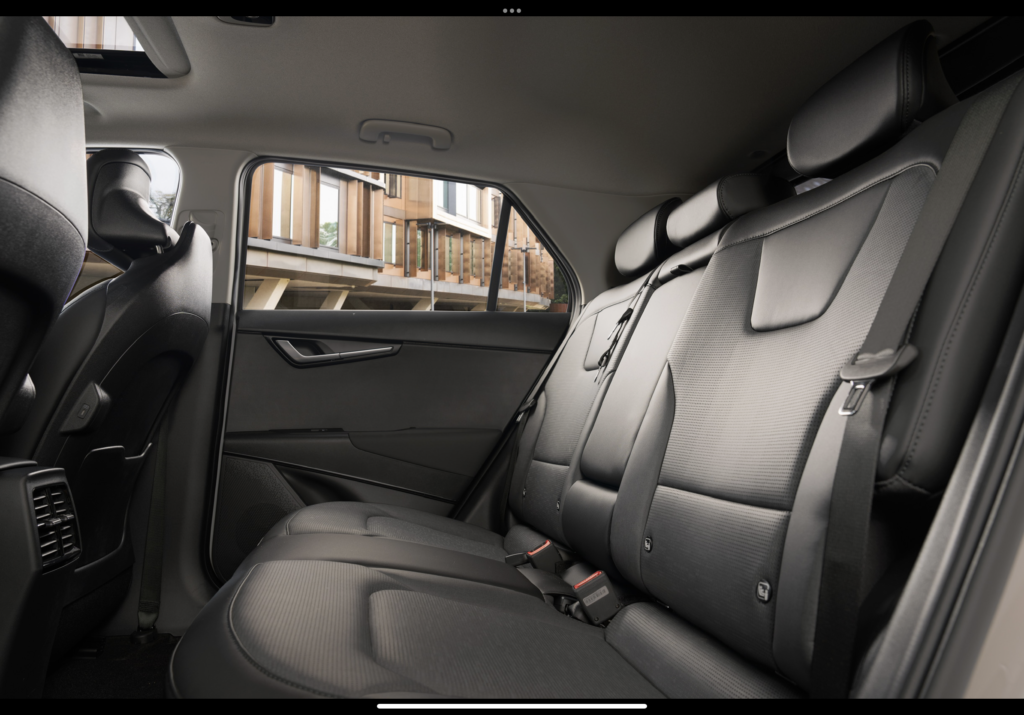
For the road trip it’s employed re-charging their iPads, but really, there’s opportunity here. Next time I’ll bring a Nespresso machine for proper coffee on the go. Or maybe even a small fridge to keep drinks and lunch cool?
I joke we could take the giant widescreen TV from the lounge and have that working in the back for the journey. The kids continually question why we’re not actually doing so.
There’s another V2L socket on the charge cable, able to be used outside the vehicle. Ideal for something like an electric bike or scooter.
If I’m having a grumble, the rear seats don’t slide on runners to up versatility. And from the back seats, the front seat headrests are extraordinarily odd. They poke forward, looking somewhat like E.T. coated in grey plastic.
The drive’s serene, but on the highway, tyre and wind noise are obvious. Nothing unusual there for an EV. An eight-speaker Harman/Kardon system’s fair compensation to drown it out.
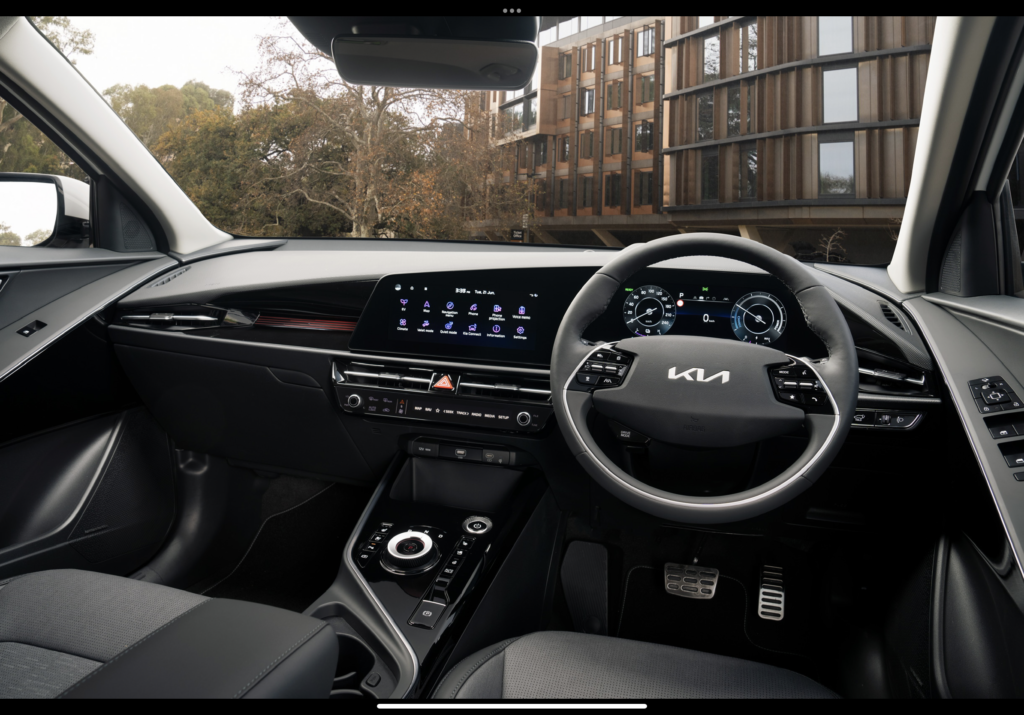
I have a play with the regen braking paddles behind the steering wheel, which have four levels from 0-3.
In its strongest setting it’s still not too harsh, so it’s my preference using this in town to harvest some energy back to the battery.
But really, the economy’s proving so good I decide to switch all regen off for most driving – it keeps things so much smoother and ‘normal’ car-like.
After almost 380km, I’ve achieved 14.8kWh per 100km economy. That 450km range is more than achievable.
Having done a few hours in the saddle on a single trip, I reckon the seats are a bit too firm. Didn’t notice that before on short journeys, but the bum was a bit numb after a few hundred kilometres.
Day 4 – Public charging
I’m down to 19 per cent battery and 80km range.
Time to use the 50kW public charger closest to my home, finally back in service after around six months out of action while awaiting new parts.
The Niro can handle up to around 105kW charge speeds – some distance off what its big brother Kia EV6 manages – but that counts for nothing if the DC charger, as here, can only dish out 50kW at once.

It’s a Smart Charge station attached to a hotel and is rarely used. I plug in and the car tells me it’s receiving 43kW rate and it’ll take two hours and nine minutes to reach 100 per cent.
The Niro GT-Line has what Kia calls a Front Passenger Premium Relaxation Seat, where you press a button and it initiates full recline electrically. Looking up through the panoramic roof and it’s a rather lush place to enjoy a kip while riding out those two hours.
Of course, real life doesn’t work that way, so I’m off to run errands and grab lunch with the family.
Using the Smart Charge app, I’m able to stop the charging whenever I fancy. I do so from a coffee shop after 74 minutes, when the battery has reached 90 per cent.
On returning to the Niro, I see I’ve added 49.5kWh charge and range is now a very pleasing 392km. Not bad at all for the $15.22 I paid for the service.
Day 5 – Credit where it’s due
I’m starting to really like the drive of the Niro GT-Line, even if I stand by my ‘it’s boring’ comment.
The instant throttle response is brilliant in town, and it’s never accompanied by a vulgar screech of spinning front wheels. This often happened when I tested the Hyundai Kona Electric.
Let’s be honest, 99 per cent of our drives are drab affairs. Commuting, getting kids to school, going to the shops, cruising on the highway. The Niro excels here, as do most EVs. I’d happily live with this car for such drives, then keep a proper fun (combustion engine) car for those rare times I’d seek out fun driving roads.
I like the motor calibration. Power builds in a very linear, smooth way – there’s plenty of guts, you just never have any ‘wow’ moments.
There’s a Sport mode that adds a dash more eagerness, but not much.
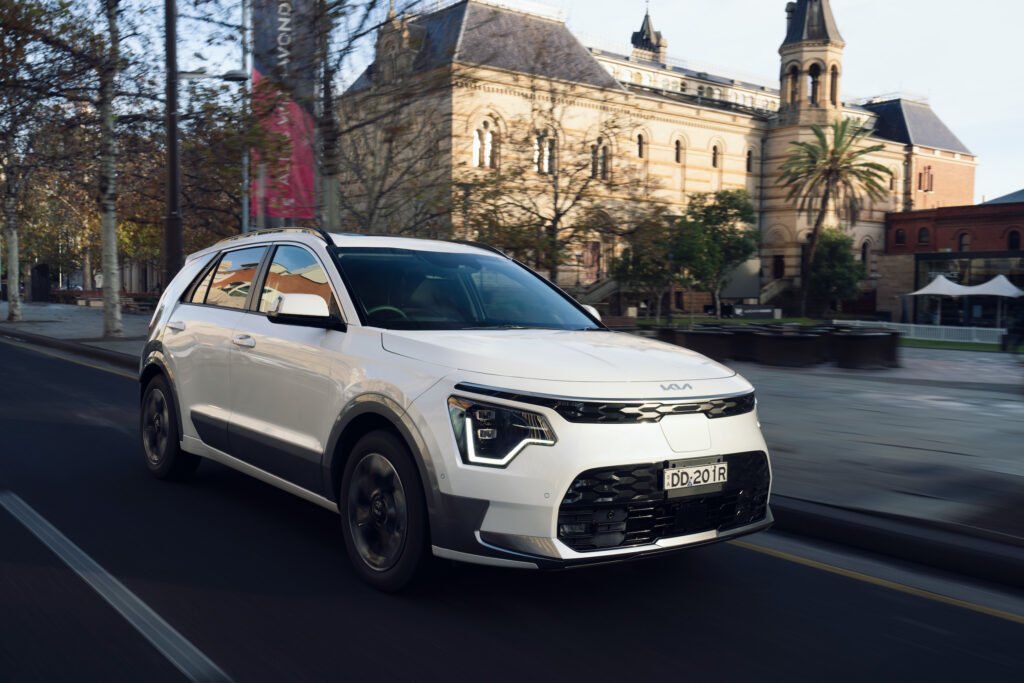
The suspension has Kia’s typical balance of just enough ride comfort matched with impressive handling when you do chuck the car into a corner. Again, perfectly suited to the perceived general use.
The steering has good weight, body roll’s not a thing and the tyres offer reasonable grip. It’s simply a very well set up car.
Even with a bit of back road playtime, my average energy use is stubbornly sitting at 14.8kWh per 100km.
I reset the trip computer when I’m on the highway at 110km/h and still average the same. Talk about consistency.
Day 6 – Home charging
I have a chat with a mate who bought a Niro GT-Line a few months ago. He accepted it was a lot of money, but has loved the ownership experience so far.
His only complaint? The seats may be power, heated and ventilated, but he laments no memory seats. He and his wife share the car and have completely different driving positions.
While I shame him for his First World grumble, I chime in with my own. The Niro GT-Line has an automatic tailgate, which closes with the touch of a button. Many cars these days have a ‘close and lock’ button on the tailgate too. The Niro does not. One just makes life that little bit easier.
As does a 360-degree camera, conspicuous by its absence on the Niro GT-Line. At this price, it really should be included. Otherwise, the Niro’s safety suite is comprehensive.
Before having to return the car tomorrow, I plug it into my garage power point (simple 10 amp) to give it a boost.
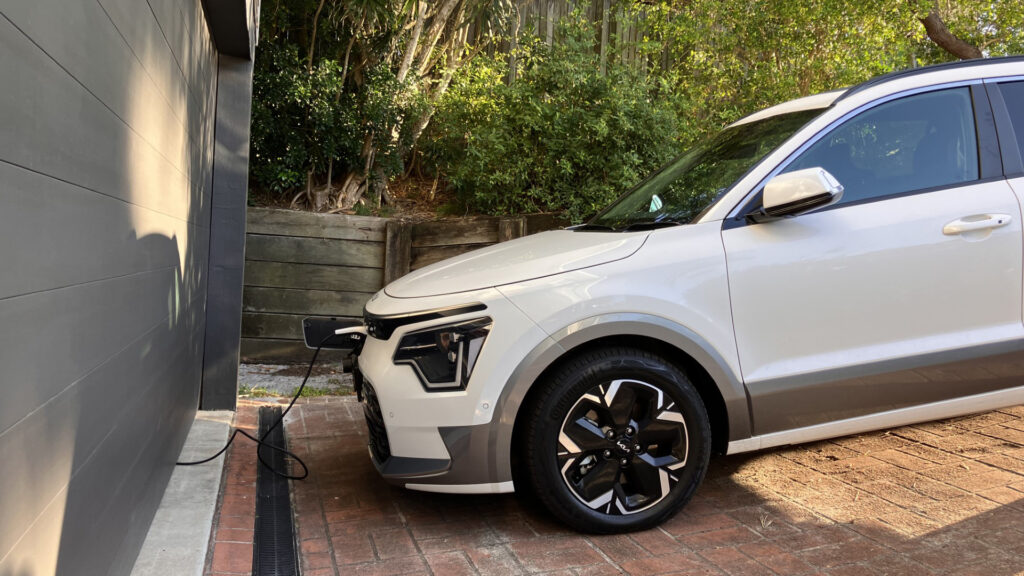
With 17 per cent battery remaining, I’m told the 2.2kW charge rate means 28 hours and 10 minutes to 100 per cent charge. Yep, I’d get a wall box if I owned a Niro.
As I’d plugged it in at 2.30pm, by the time I leave the next day at 8am, I’ve got 67 per cent battery life and some 300km of range. All I, and most owners, would ever need for a daily drive.
Day 7 – Farewell and conclusion
After 830km in total, energy use sticks at 14.8kWh per 100km. That’s up there with the very best I’ve seen in terms of economy from an EV.
Kia, like Hyundai, are the most accurate EVs I test when it comes to reliable battery use and true range.
I’d happily live with one of these Niro GT-Lines EVs. It’s a bit boring for me, but brilliantly boring.
It’s a solid point-and-press family vehicle, short on thrills but shining in practically every area that counts. Space, drive comfort, technology, cabin luxe, economy and ride quality – all are commendable.
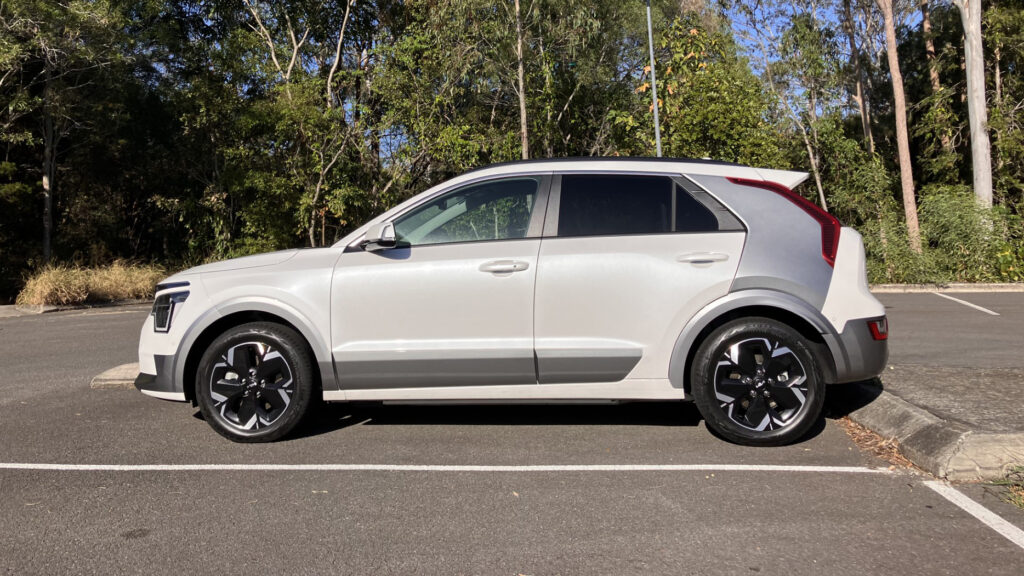
If it were $10,000 cheaper, the Niro EV-Line would be up there with the EVs I’d most recommend.
But it’s too closely priced to the excellent Kia EV6 Air, and about line-ball with a 2WD Hyundai Ioniq 5.
The latter remains my pick in the circa $70,000 realm, but I now understand why Niro EV owners are a contented bunch.
Kia Niro EV GT-Line specifications
Price: $72,360 plus on-road costs
Basics: EV, SUV, 5 seats, FWD
Range: 460km (WLTP)
Battery capacity: 64.8kWh
Battery warranty: 7 years/150,000km
Energy consumption: 16.2kWh/100km (14.8kWh/100km on our test)
Motors: 1 front 150kW/255Nm
AC charging: 11kW, Type 2 plug
DC charging: 105kW (estimated), CCS combo plug
0-100km/h: 7.8 seconds (claimed)







